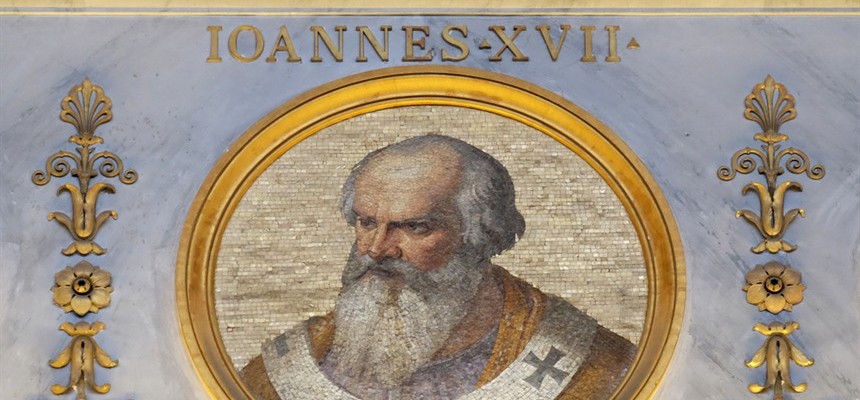
The years 1002 and 1003 were very difficult for the papacy. In the previous year, the Roman nobles, under the leadership of the son of the slain Crescentius II, John Crescentius, had begun a revolt. It was a serious enough threat to the papacy that the young emperor, Otto III, had taken up residence in the city of Rome. Even with imperial protection, Pope Sylvester II and the emperor had to flee to Ravenna, where they stayed for over a year. Otto forayed out three times to regain control of the capital city. On that third foray, the emperor was killed.
Sylvester, left relatively unprotected, returned to his city. John Crescentius remained firmly in control and the poor pope died within a year, May 12, 1003. With civil authorities running the Church and the city, there was no election for a new pope. It appears that John Sicco, a priest, was simply nominated and consecrated four days later.
John Sicco was the son of Giovanni (John) Sicco of the region of Rome named after the monastery of St. Andrew of Biveretica, not far from the still-standing Trajan’s arch. The younger John had married early in life and had three sons who, like himself, had taken Holy Orders. Son John became the bishop of Praeveste, son Peter was a deacon, son Andrew was a canon notary. Our John became a priest in his widowhood.
We know little about Pope John’s papacy, since he did not live out the year. We know that John approved of a mission by Bruno of Querfurt to East Europe. This Bruno also requested that John authorize his associate, Benedict, to evangelize the Slavs. Now, this may be a coincidence, but this is the same year that St. Stephen became the king of Hungary and vowed to make it a Christian country.
For years, no one seemed to know the date of Pope John’s demise, only that it was one of several dates. Eventually, at a monastery of Saints Cosmos and Damian, a document was found in which the abbot leased a homestead to a John de Iannia, “in the first year of our Lord John XVII…the 9th day of September”. So, we know he was alive on that date. This increases the likelihood that the 6th of November, 1003 is more accurate.
Pope John XVII was buried in the Lateran Basilica between two of the doors of the principal façade. John the Deacon, the historian of the Lateran Basilica in the twelfth century, wrote this about John’s burial place: “Here is the tomb of the supreme John, who is said to be Pope, for so he was called.” Apparently, many were not happy with how he ascended the throne.
In 1040, the three sons erected an epitaph at St. Prassede, indicating that they were of the family of Pope Sicco. There’s nothing better than bragging that you are a pope’s son!

Recent Comments